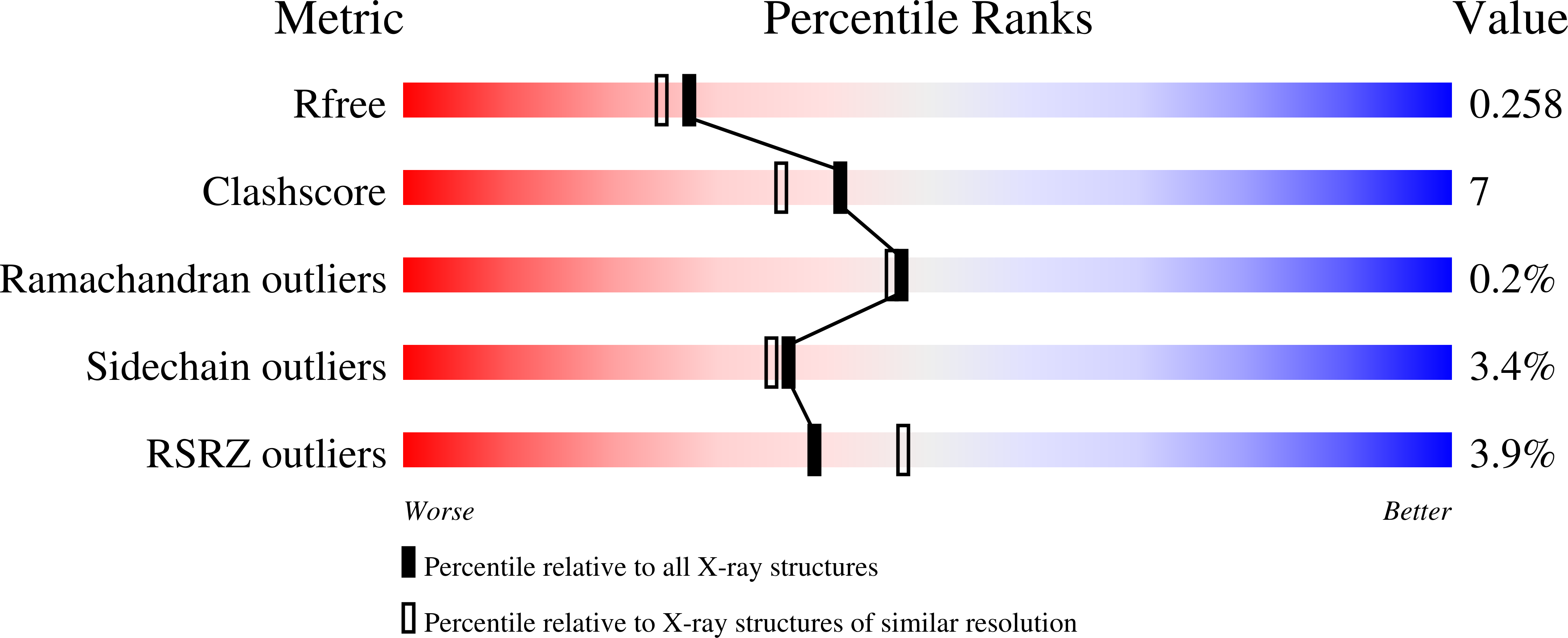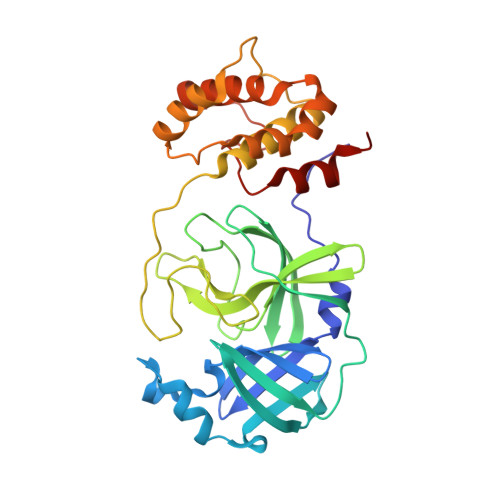Peptidomimetic alpha-Acyloxymethylketone Warheads with Six-Membered Lactam P1 Glutamine Mimic: SARS-CoV-2 3CL Protease Inhibition, Coronavirus Antiviral Activity, and in Vitro Biological Stability.
Bai, B., Belovodskiy, A., Hena, M., Kandadai, A.S., Joyce, M.A., Saffran, H.A., Shields, J.A., Khan, M.B., Arutyunova, E., Lu, J., Bajwa, S.K., Hockman, D., Fischer, C., Lamer, T., Vuong, W., van Belkum, M.J., Gu, Z., Lin, F., Du, Y., Xu, J., Rahim, M., Young, H.S., Vederas, J.C., Tyrrell, D.L., Lemieux, M.J., Nieman, J.A.(2022) J Med Chem 65: 2905-2925
- PubMed: 34242027
- DOI: https://doi.org/10.1021/acs.jmedchem.1c00616
- Primary Citation of Related Structures:
7MBI - PubMed Abstract:
Recurring coronavirus outbreaks, such as the current COVID-19 pandemic, establish a necessity to develop direct-acting antivirals that can be readily administered and are active against a broad spectrum of coronaviruses. Described in this Article are novel α-acyloxymethylketone warhead peptidomimetic compounds with a six-membered lactam glutamine mimic in P1. Compounds with potent SARS-CoV-2 3CL protease and in vitro viral replication inhibition were identified with low cytotoxicity and good plasma and glutathione stability. Compounds 15e , 15h , and 15l displayed selectivity for SARS-CoV-2 3CL protease over CatB and CatS and superior in vitro SARS-CoV-2 antiviral replication inhibition compared with the reported peptidomimetic inhibitors with other warheads. The cocrystallization of 15l with SARS-CoV-2 3CL protease confirmed the formation of a covalent adduct. α-Acyloxymethylketone compounds also exhibited antiviral activity against an alphacoronavirus and non-SARS betacoronavirus strains with similar potency and a better selectivity index than remdesivir. These findings demonstrate the potential of the substituted heteroaromatic and aliphatic α-acyloxymethylketone warheads as coronavirus inhibitors, and the described results provide a basis for further optimization.
Organizational Affiliation:
Li Ka Shing Applied Virology Institute, University of Alberta, Edmonton, Alberta T6G 2E1, Canada.
















